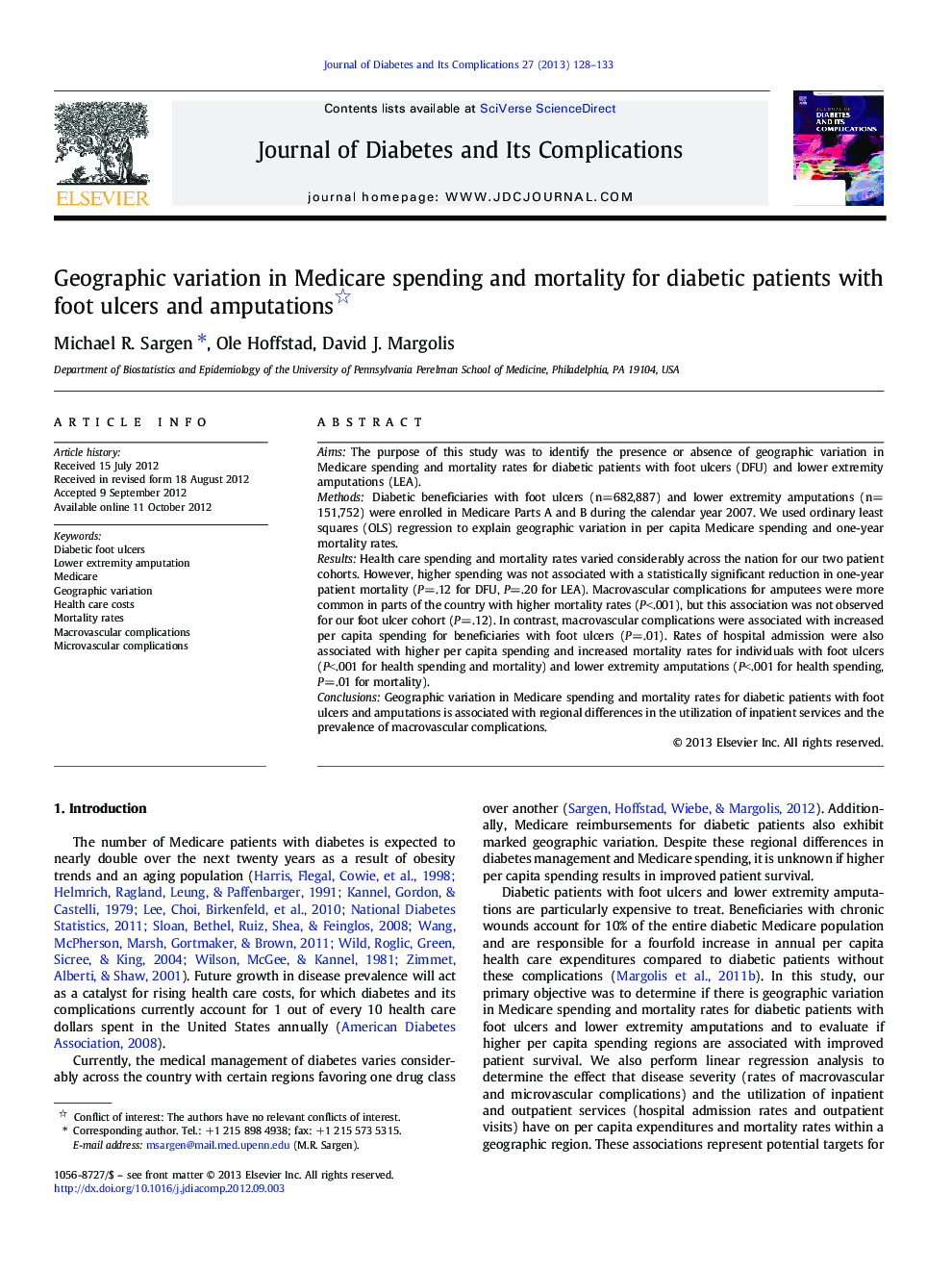| Article ID | Journal | Published Year | Pages | File Type |
|---|---|---|---|---|
| 2804378 | Journal of Diabetes and its Complications | 2013 | 6 Pages |
AimsThe purpose of this study was to identify the presence or absence of geographic variation in Medicare spending and mortality rates for diabetic patients with foot ulcers (DFU) and lower extremity amputations (LEA).MethodsDiabetic beneficiaries with foot ulcers (n=682,887) and lower extremity amputations (n=151,752) were enrolled in Medicare Parts A and B during the calendar year 2007. We used ordinary least squares (OLS) regression to explain geographic variation in per capita Medicare spending and one-year mortality rates.ResultsHealth care spending and mortality rates varied considerably across the nation for our two patient cohorts. However, higher spending was not associated with a statistically significant reduction in one-year patient mortality (P= .12 for DFU, P= .20 for LEA). Macrovascular complications for amputees were more common in parts of the country with higher mortality rates (P< .001), but this association was not observed for our foot ulcer cohort (P= .12). In contrast, macrovascular complications were associated with increased per capita spending for beneficiaries with foot ulcers (P= .01). Rates of hospital admission were also associated with higher per capita spending and increased mortality rates for individuals with foot ulcers (P< .001 for health spending and mortality) and lower extremity amputations (P< .001 for health spending, P= .01 for mortality).ConclusionsGeographic variation in Medicare spending and mortality rates for diabetic patients with foot ulcers and amputations is associated with regional differences in the utilization of inpatient services and the prevalence of macrovascular complications.
